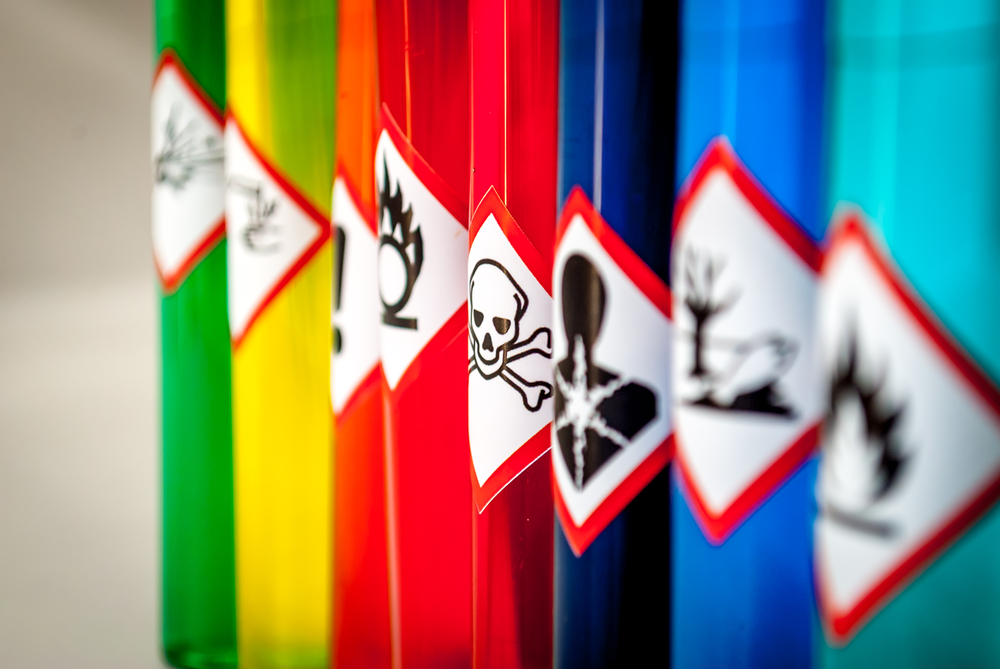
What are the hazardous chemical agents regulations?
In 2021, the South African Minister of Employment and Labour gazetted updates regarding the Hazardous Chemical Substances Regulations, 1995 (1995 Regulations). Changes applied to the new regulations (2021 Regulations) include new definitions and updates regarding the issues of labelling and disposing of chemical agents. These amendments will take effect in September 2022. An article by Webber Wentzel lays out these updates in fine detail, and we are unpacking them for you below:
New definitions
When looking at the 2021 Hazardous Chemical Agents Regulations, we see a few new and updated definitions, including:
- “BEI” or “biological exposure index” (revised definition)
A value for assessing biological monitoring results, intended as a reference guideline for the likelihood of adverse health effects, and generally represents the level of determinants that are most likely to be observed in specimens collected from healthy employees who have been exposed to HCAs with inhalation exposure at the occupational exposure limit.
- “CAS number” or “chemical identity” (new definition)
The number or name, respectively, that uniquely identifies a chemical, given in accordance with the nomenclature systems of the International Union of Pure and Applied Chemistry or the Chemical Abstracts Service, or a technical name.
- “chemical agent” (new definition)
A GHS-aligned chemical agent or mixture.
- “GHS hazard classification” (new definition)
The GHS hazard classes and hazard categories assigned to HCAs.
- “hazard category” (new definition)
A division of criteria within a hazard class in the GHS, where these hazard categories compare hazard severity within a hazard class and should not be taken as a comparison of hazard categories more generally.
- “hazardous chemical agent” or “HCA” (revised definition)
A GHS-aligned chemical agent as provided for in Annexure 1.
Unpacking the adjusted HCA regulations
Regulation 2 – Scope of application
Other than applying to employers (including self-employed persons) who carry out work at a workplace which may expose any person to an HCA, the 2021 Regulations now also apply to: manufacturers, importers, suppliers and retailers.
Regulation 3 – Information, instruction & training
The 1995 Regulations referred to “information and training,” whereas the 2021 Regulations refer to “information, instruction and training”. Additionally, employers must ensure clarity around:
- Chemical substance regulations that govern all aspects of HCA use at the workplace;
- Duties of the person or people who are likely to be exposed to an HCA;
- Details of the HCAs to which an employee is likely to be exposed at the workplace;
- Work practices and procedures that must be followed for the use, handling, storage, transportation, spillage and disposal of an HCA in emergency situations;
- Precautions that must be taken by employees to protect themselves against health risks associated with exposure, including wearing and using protective clothing and respiratory protective equipment.
Regulation 6 – Air monitoring
It is no longer permitted for any persons other than an approved inspection authority to conduct air monitoring measurements. Representative testing is required every two years for HCAs with maximum limits and restricted limits.
Regulation 7 – Medical surveillance
The provision on medical surveillance in the 2021 Hazardous Chemical Agents Regulations remain the same as those in the 1995 Regulations, except that HCAs are now listed in Table 4 of Annexure 2 to the 2021 Regulations. HCAs now include acetone, benzene, fluorides, lead, mercury and uranium.
Regulation 9 – Records
The requirement for employers to keep medical surveillance records is not included in the 2021 Regulations.
Regulation 10 – Control of exposure to hazardous chemical agents
The 2021 Regulations require that an employer ensure that the emission of an HCA into the atmosphere complies with the provision of the National Environmental Management Air Quality Act 39 of 2004.
Regulation 13 – Prohibitions
All the prohibitions from the 1995 Regulations made it into the 2021 update, with a few additions:
No person may use statements such as “non-toxic”, “non-harmful”, “non-polluting” or “non-hazardous” or similar statements indicating the HCA is not hazardous, or any other statements that are inconsistent with the HCA’s GHS classification on the label or packaging of any HCA.
No person may manufacture, procure, use, handle or store within their workplace:
- A prohibited hazardous chemical agent as listed in Table 1 of Annexure 2;
- Ozone-depleting substances provided in the Regulations regarding the Phasing-Out and Management of Ozone-Depleting Substances, published as Government Notice No. R. 351 of 8 May 2014;
- Persistent organic pollutants prohibited by the Prohibition on the Import, Export, Possession, Acquisition, Sale, Use and Disposal of Agricultural Remedies, under section 7 of the Fertilizers, Farm Feeds, Agricultural Remedies and Stock Remedies Act, 1947 (Act No. 36 of 1947), published as Government Notice No. R. 862 of 29 July 2016.
Regulation 14 – Classification of hazardous chemical agents
Our final Hazardous Chemical Agents Regulation to look at is a new one in the 2021 Regulations. It instructs manufacturers and importers of chemical agents to:
- Determine whether the chemical agent is an HCA by carrying out a hazard assessment, with reference to the cut-off values provided in Tables 4 and 5 of Annexure 1;
- If the substance, mixture or article is an HCA, ensure that a GHS classification is carried out for the HCA;
- Review the GHS classification if a change is made in the composition of the HCA.
The 2021 Regulations make it clear that the above must be done before any chemical agents are supplied to the workplace.
The amendments to the Hazardous Chemical Agents Regulations (2021) will come into full effect from September 2022. Is your workplace and workforce in compliance?
Book SANAS 17020 Accredited Occupational Hygiene Training Association (OHST) training courses and empower your workers with the knowledge they need to remain safe at work.
You can quickly and effortlessly improve occupational health for employee welfare and business growth. Get started on your journey to creating a safe working environment with risk assessments and staff occupational health training.
Apex Environmental is SANAS 17020 Accredited and a Department of Employment and Labour Approved Inspection Authority.








